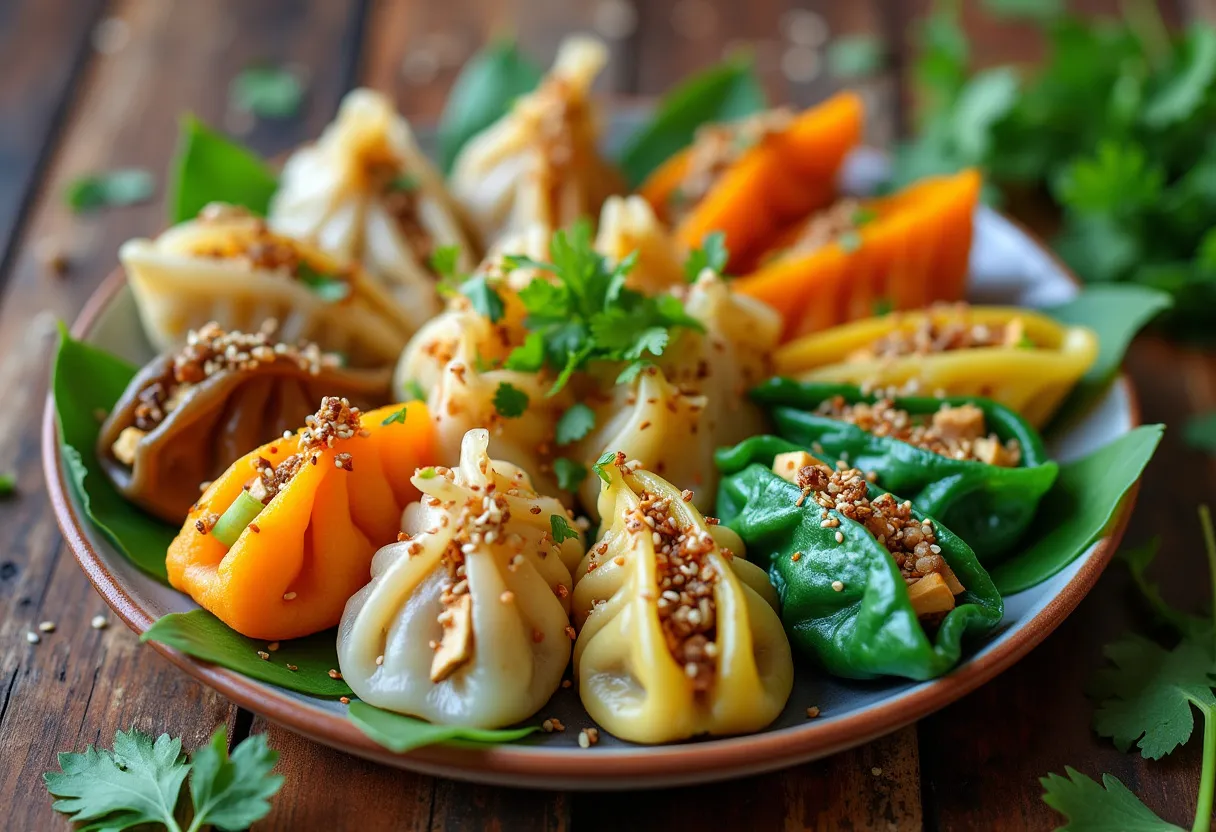
Exploring the Rise of Plant-Based Dumplings: A Fusion of Tradition and Modern Nutrition
Published on 9/25/2024
Mei Chen • 9/25/2024
In recent years, culinary trends have taken a health-conscious turn, with one of the standout movements being the rise of plant-based cuisine. Among these innovations, plant-based dumplings are capturing the attention of food enthusiasts and nutrition experts alike. As a culinary nutritionist, I've witnessed firsthand how these delicious pockets of joy are becoming a delightful fusion of tradition and modern dietary needs.
The Traditional Roots of Dumplings
Dumplings have a storied history, with versions found across various cultures. In China, for example, they are a staple during celebrations such as the Lunar New Year. Traditionally filled with pork, chicken, or shrimp, these savory morsels have long been cherished for their hearty flavors and comforting textures.
A Modern Twist: Plant-Based Variations
With a growing interest in plant-based diets, innovative chefs and home cooks are experimenting with alternative fillings. Ingredients such as tofu, mushrooms, sweet potatoes, and spinach are becoming common in plant-based dumplings.
- Tofu - a great source of protein and calcium.
- Mushrooms - add a umami-rich depth to the filling.
- Sweet Potatoes - offer a subtle sweetness and plenty of fiber.
- Spinach - provides iron and a vibrant color.
These ingredients do not only substitute meat but also enhance the nutritional values, making the dumplings both flavorful and healthful.
Health Benefits of Plant-Based Dumplings
Transitioning to plant-based dumplings can offer many health benefits:
- Lower in Calories and Fat: Plant-based fillings generally contain fewer calories and less fat compared to meat options.
- Rich in Nutrients: Incorporating a variety of vegetables can provide a range of essential vitamins and minerals.
- Increased Fiber: Vegetables like cabbage and carrots contribute to a higher fiber content, aiding digestion.
- Environmentally Friendly: Reducing meat consumption is beneficial for the planet, as it lowers carbon footprints.
Adapting to plant-based versions maintains the essence of these beloved dishes while aligning with contemporary health trends.
Creating a Balance Between Taste and Nutrition
When developing plant-based dumplings, striking a perfect balance between nutritional value and taste is crucial. Using a fine blend of spices such as ginger, garlic, and a dash of soy sauce can elevate the flavors exponentially. Creativity in the choice of dumpling wrappers, such as whole-wheat options, also adds a healthy twist.
One of my favorite moments in the kitchen is using my family's traditional techniques with these new, vibrant ingredients. It's incredible how versatile and forgiving a simple dumpling can be.
Plant-Based Dumplings: A Culinary Adventure Awaits
The rise of plant-based diets is not merely a trend but rather a positive shift toward more sustainable and healthy eating habits. As we continue to embrace these changes, plant-based dumplings are set to be on more tables than ever, bridging a gap between the savory traditions of the past and the nourishing future.
Whether you're a seasoned cook or a novice in the kitchen, creating your plant-based dumplings could be your next exciting culinary adventure. With the right mix of ingredients and a well-set cooking timer, you're on your way to crafting a dish that's nothing short of magnificent.
Mei Chen
Nutritionist and Recipe Innovator | I've been cooking
Born and raised in the bustling city of Shanghai, Mei was immersed in the diverse flavors of regional Chinese cuisine from a young age. Her family's restaurant exposed her to the world of Chinese cooking techniques, from dumpling making to stir-frying. After moving to the United States to pursue a degree in nutrition, Mei became passionate about combining the health benefits of traditional Chinese food with modern dietary trends. She now lives in San Francisco and works as a culinary nutritionist, developing healthy Asian-inspired recipes and teaching workshops on nutritious eating.